The Victorian hedonism of Lawrence Alma-Tadema
In this new Descubrir el Arte article written by Natalia de Val Navares and translated by Ilaria, we review the biography and artistic career of Lawrence Alma-Tadema. So to learn more about this artist, do not hesitate to read the article! ;)
It marks the one hundred and third anniversary of the death of the artist, a symbol of Victorian painting, lover of antiquity, female beauty and flowers.
Lawrence Alma-Tadema (Dronrijp, 1836 Wiesbaden, 1912) was one of those painters who decided not to follow the path of progress at a time when the world had been exalted by the Industrial Revolution. To machines and speed he preferred the atmospheres of the ancient world and spiritual contemplation. Born in 1836 as Laurens Tadema in a Dutch village, he was orphaned by his father when he was just four years old, an age at which he began to receive painting training from a local master thanks to his mother’s artistic interests. He tried to train himself, however, in the trade of his father, a notary, but in 1851 he was diagnosed with tuberculosis and decided to spend the rest of his life between canvases and painting.
In his early years of total dedication to art, Alma-Tadema’s chosen subject matter already announced his taste for the past and its mythmaking. Until the mid-1860s, his works reflected Merovingian themes, such as The Education of the Children of Clovis (1861) for which he received special attention at the Antwerp Artistic Congress, but also criticism from his master Jan August Hendrik Leys, who likened marble work to cheese. Alma-Tadema accepted this criticism deeply, and his efforts led him to become one of the best painters of surfaces, particularly marble and flowers, and of greater rigor in depicting antiquity. After this minor success, he worked as an independent painter the following year, while in 1863 he married for the first time and traveled to Italy, visiting Pompeii and Herculaneum, but he was especially fascinated by Imperial Rome, the protagonist of his finest works. Moreover, his popularity grew when in 1864 he met the art dealer Ernest Gambart in Paris, who circulated his art to Brussels and London.
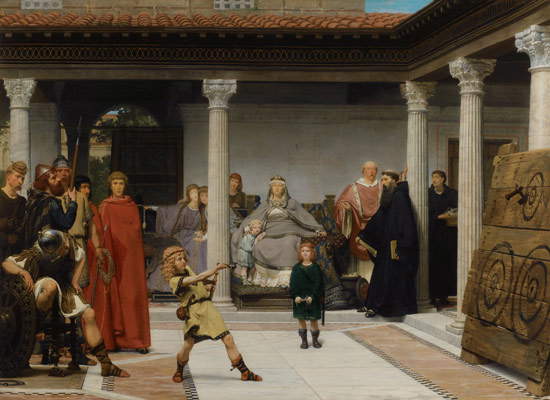 |
| Lawrence Alma-Tadema, The Education of the Children of Clovis (1861; oil on canvas, 127 x 176.8 cm; private collection) |
The painter decided to move away from the themes of the French dynasty to deal with others that were more international and enjoyed greater popularity, such as Ancient Egypt, with depictions that were as tragic as they were beautiful a key feature of his style in paintings such as The Death of the Firstborn (1872). In 1870 his wife had died suddenly of smallpox, and for a while Alma-Tadema did not work again because of her consternation. However, the sadness did not last long: he moved to London and here he met the very young Laura Epps, an artist with whom he married and through whom he acquired British nationality. He found his ideal place in the city that would shortly thereafter be marked by the genius of Oscar Wilde, also a hedonist like Alma-Tadema, and it was here that the painter developed most of his Roman-themed artistic output.
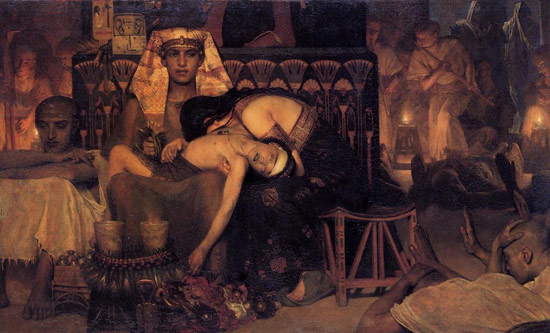 |
| Lawrence Alma-Tadema, The Death of the Firstborn (1872; oil on canvas, 77 x 124.5 cm; Amsterdam, Rijksmuseum) |
His virtue and his Achilles’ heel paradoxically combined. His desire to depict the everyday life of the Romans and the natural languidness of his characters made it possible for his contemporaries to identify with the denizens of the Empire to the point of giving them the appellation Victorians in togas. The archaeological theme introduced by Alma-Tadema in his works also led him to polemic with the famous Winckelmann, as he colored the marble of Phidias showing the Parthenon frieze (1868) instead of choosing the purity of white defended by the German archaeologist.
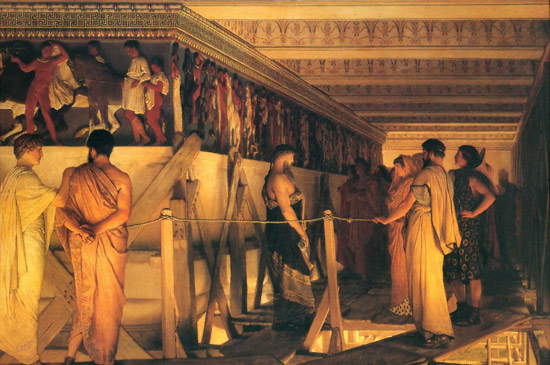 |
| Lawrence Alma-Tadema, Phidias showing the Parthenon f rieze (1868; oil on canvas, 72 x 110 cm; Birmingham, City Art Gallery) |
Rest and reflection seem to be the common thread in the scenes depicted by Alma-Tadema, even in the tension of the moment depicted in his masterpiece The Roses of Heliogabalus (1888), in the instant before the emperor caused the romantic death by asphyxiation of his guests and himself due to the amount of flowers falling on their bodies. The delicacy in the treatment of flowers provokes a synesthesia in the direct contemplation of his works: in fact, Alma-Tadema was able to create atmospheres so sensual and sensory that it seems as if one can smell the perfume emanating from the flowers and the breeze moving the light tunics. The use of flowers is in connection with the culture of the time, which identified women with the flower for its ephemeral beauty. Beautiful girls are also a constant in Tadema’s painting, always rosy, slender and absorbed in their thoughts, as in The Favorite Poet (1888) or the work In the Tepidarium (1881).
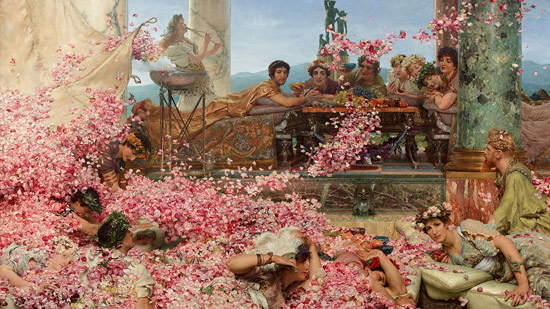 |
| Lawrence Alma-Tadema, The Roses of Heliogabalus (1898; oil on canvas, 131.8 x 213.4 cm; Private collection) |
 |
| Lawrence Alma-Tadema, In the tepidarium (1881; oil on panel, 24 x 33 cm; Port Sunlight, Lady Lever Art Gallery) |
His taste for classicism is offset by a latent modernity that can be sensed in the compositions influenced by photographic framing and Japanese art so much in vogue at the time. In addition, his sceneries show tremendous technical virtuosity in creating sensations of lightness on the terraces where the characters rest in Expectations (1885) or in the perfection of the perspective of the exedras in The Favorite Habit (1909).
His passion for classicism also influenced his somewhat eccentric life, as he bought a lavish villa in London that he decorated in the Pompeian style. This was reflected in his artistic output: between 1883 and 1887 he produced larger paintings, as his earnings were higher. However, the passion he showed for the past earned him the position of referent for the major Hollywood film productions, in which he gave enormous influence for the sets of the films of D.W. Griffith and Cecil B. DeMille.
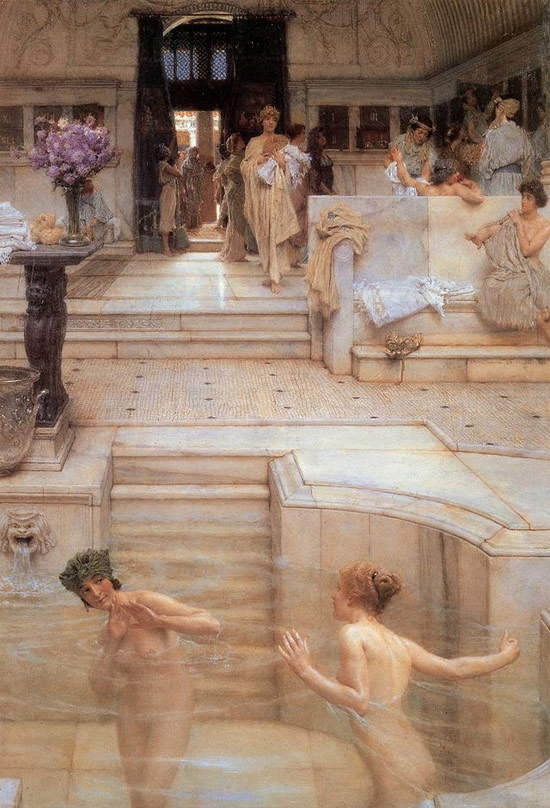 |
| Lawrence Alma-Tadema, The Favorite Habit (1909; oil on panel, 66 x 45.1 cm; London, Tate Gallery) |
Warning: the translation into English of the original Italian article was created using automatic tools. We undertake to review all articles, but we do not guarantee the total absence of inaccuracies in the translation due to the program. You can find the original by clicking on the ITA button. If you find any mistake,please contact us.





























